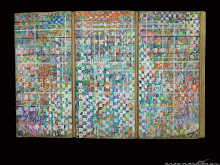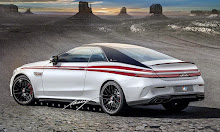A Parrot Tulip makes everything look better! Pecan Pesto Chicken and Scarborough Fair marinara dipping sauce, with grated Romano and fresh Mozzarella. I made up this variation yesterday of the classic breaded boneless chicken, after listening to Simon & Garfunkel's classic song, Scarborough Fair,
and realizing I had all the correct herbs in-house—Parsley, Sage, Rosemary, and Thyme, lol.
Pecan Pesto Chicken with Scarborough Fair Marinara Sauce
I N G R E D I E N T S
Chicken:
1 lb boneless chicken breasts, cut into 8 strips
1/2 cup flour
1 large, or extra large, egg
3 tbsp prepared Pesto
1 cup Panko breadcrumbs
1/2 cup ground pecans
1/2 cup ground Romano or Parmesan cheese
Marinara sauce:
1 29 oz can whole peeled plum tomatos or tomato sauce
1 6 oz can plain tomato paste
1/2 chopped white onion
1/2 cup fresh chopped parsley
2 tbsp dried sage
2 tbsp dried rosemary
2 tbsp dried thyme
1 tbsp white vinegar (I use japanese rice vinegar)
D I R E C T I O N S
Chicken:
Place flour in one dish for dredging. Use a whisk to mix together the Pesto and the egg and place in a second dish. Mix together the Panko crumbs. ground pecans and ground Romano or Parmesan cheese and place in a third dish. Take each piece of boneless chicken breast and starting with the flour, dredge, then dip into the Pesto egg and then roll in the crumbs. Pat each piece to make sure the coating sticks well and place in a glass baking dish that has been drizzled with olive oil. Repeat for all pieces. After all the pieces are arranged in the cooking dish, salt and pepper to taste and drizzle a slight amount of olive oil on top of each piece of chicken. Place in a 350° oven. Turn each piece over after 30 minutes and cook for an additional 15 minutes. Chicken should plump nicely and be tender all the way through. I test mine with a cake tester and when it penetrates easily and comes out clean, the chicken is done.
Marinara sauce:
Chop onion finely and cook over medium heat in olive oil until transparent, approximately 5 minutes. Add the 6 oz can of tomato paste. Stir well. Add the can of tomatoes or tomato sauce and the fresh parsley and dried herbs. Cook covered over low heat for 20 minutes. If using whole tomatoes, press down with a wooden spoon to break up. Uncover and splash in the white vinegar. Stir and cover for 5 minutes. Turn off heat and leave covered, off heat, for another 10 minutes for all the flavors to blend. For a smooth texture use an immersion beater or pour contents into a food processor, blender, or food mill, and puree.
Plating:
Arrange the chicken on a serving platter. Pour the marinara sauce in a dipping bowl in the center. Fresh mozzarella drizzled with olive oil makes a great accompaniment. Use freshly grated Romano or Parmesan for a bit of extra flavor.
Variation:
Instead of using the chicken to dip into the marinara, this dish easily converts to good ol'
"Chicken Parm" as it's known around here, but perhaps
Chicken Mozz would be more correct. Spoon some of the warm tomato sauce into an individual baking dish, place a couple of pieces of the Pecan Pesto chicken on top, and spoon more sauce over them. Slice the fresh Mozzarella and place on top, as well as a bit of grated Romano or Parmesan. Place under the broiler until the cheese is bubbling and slightly browned.
Note:
I'm an "eyeballer" when I cook, that is I rarely actually measure anything, so the quantities listed are in the ballpark. I'm also a firm believer in using recipes like blueprints, so if you like an herb I didn't use, please use it, or if you don't like one that I used, of course omit it!
Bon Appetit!



























































